Kushalgarh, in south Rajasthan, is a humid plain area in terms of agro climatic zones of the state. Cotton is an important cash crop cultivated in this region. The other major crops grown in the area are wheat, maize and rice. Because of water scarcity, the community practices both irrigated and rain-fed agriculture together for cropping. Sometimes, it results in poor yield and hence, profitability. One cannot rely on water availability for farming.
Families who grow cotton in Kushalgarh mostly own a minimum of two blocks of land. Hiranya*, a 17 year old girl from a village which largely cultivates cotton, works on the field with her elder sister and grandmother in all stages of cultivation. Here is one such journey through the photos…
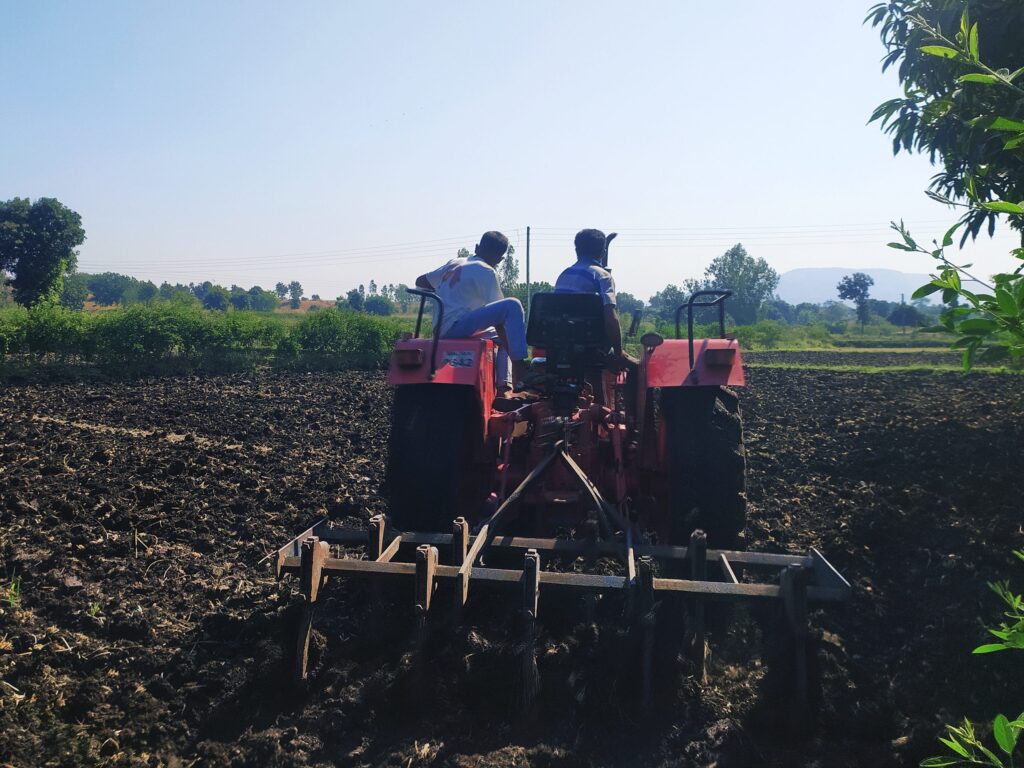
Preperation of land
In the months of June and July, the cultivation starts with preparing the land for sowing seeds. The better one prepares the land, the better are the chances for a good quality crop produce. Farmers who can afford to rent tractors use them whereas others do it manually with the help of cultivators, land levellers and harrows.
I found out that the tractors on rent cost about ₹1000 per hour and it takes one full day to plough one block of land. After ploughing, farmers break down the remaining blocks of mud manually. This takes two more days per block of land. Then, in the last stage of preparing the land, people plough the area with cattle. This again takes a whole day for one block and usually, a couple in the family does it. Farmers in this region mostly own the cattle and the tools for ploughing the field.
For cultivating cotton, even though it is suggested to sow the seed in a moist soil, for good yield, people here don’t use water during the entire process of preparing the land for cropping.
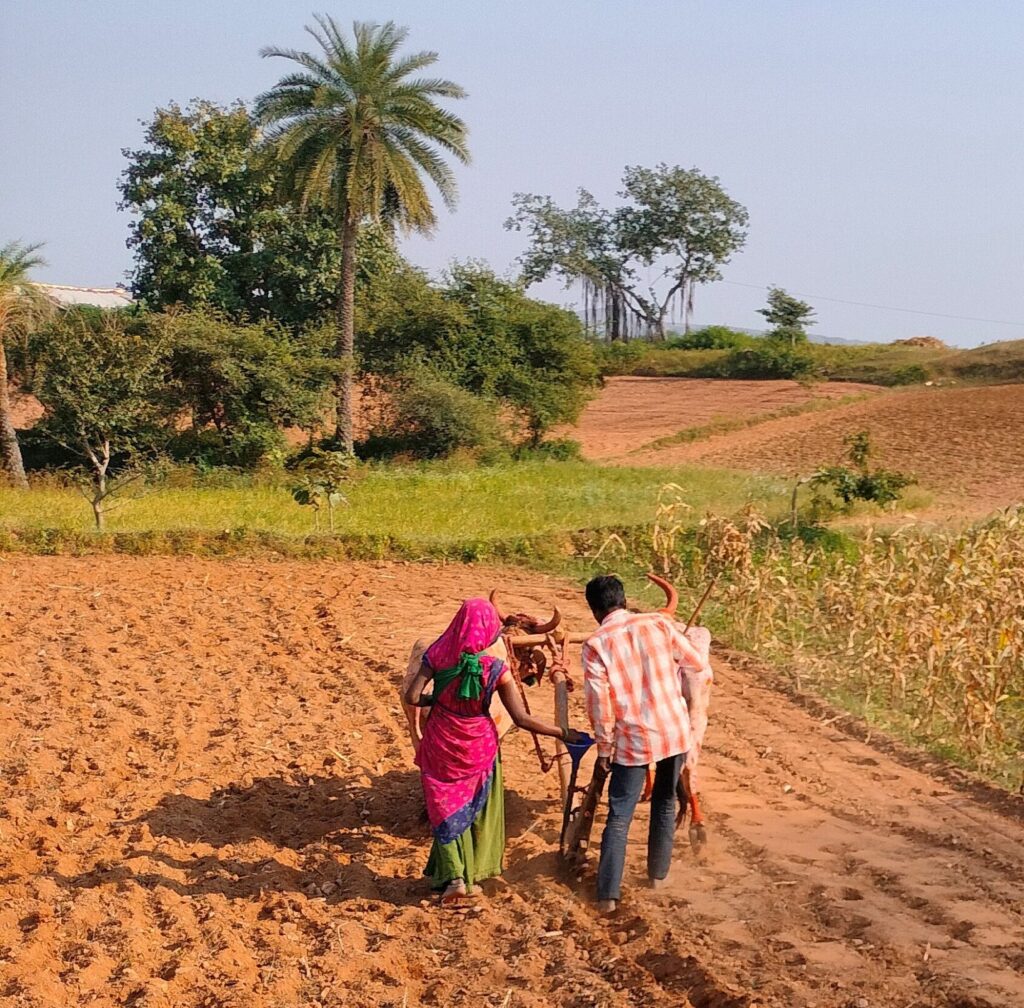
Cottton seeds are purchased after preparing the land. In Kushalgarh, 1 kg cotton seeds were sold for ₹3000 in June, last year. The quantity is enough for two blocks of land and from that, the family gets 60 kg of cotton to be sold in the market.
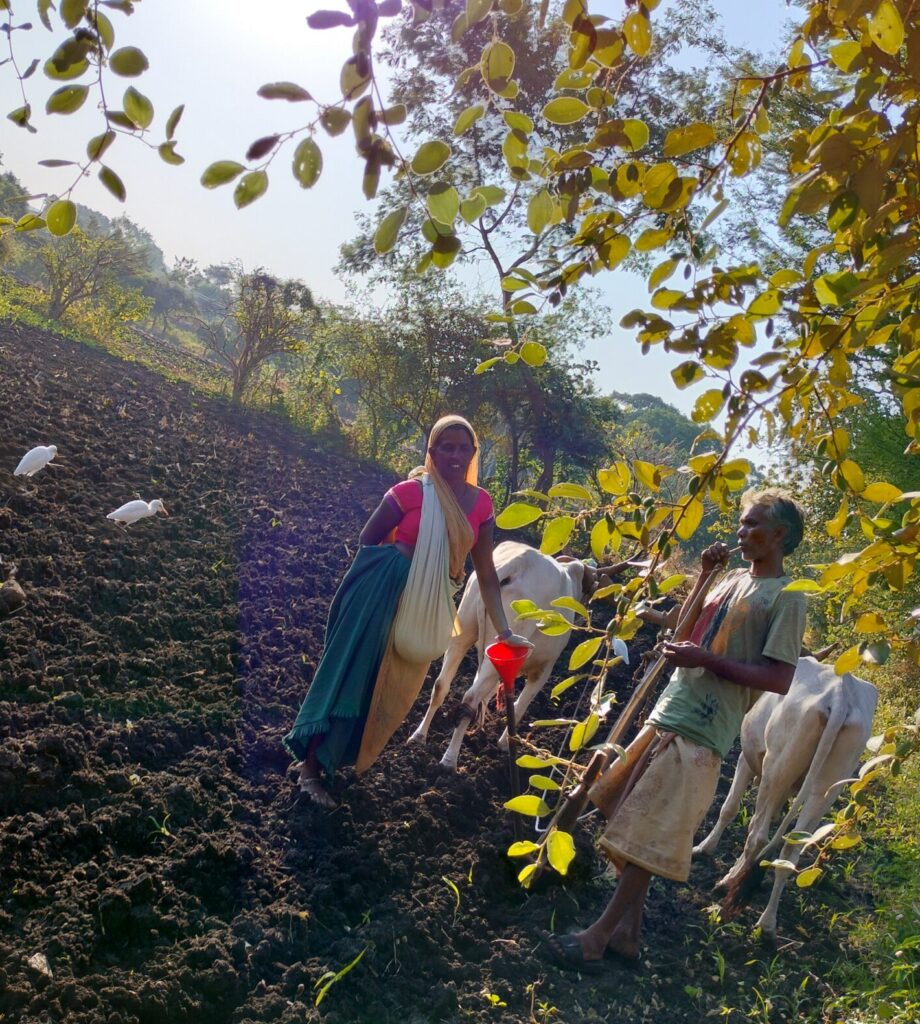
Sowing and fertilizing the cotton
They sow the seeds 4-5 inches deep and three feet apart. This is done keeping in mind that the farmers get to navigate between the plants during harvest. The seeds sprout up in seven days after planting them. After the rainfall, the plants are irrigated once in 15 days from nearby wells or lakes, and water from these wells and lakes is drawn through long pipes or artificial streams. Most of the time, two members from the family irrigate the field.
Along with sowing seeds, farmers spray fertilizers like DAP (Di-ammonium Phosphate) in two-inch distance from each cotton seed. They also use pesticides 2-3 times during the cultivation. The cotton plant grows up to a height of an avaerage of 4 feet in a time span of about 3 months. It starts to blossom from the month of October and is in full bloom in the month of November and December. Harvesting starts from the month of December and goes on until March.
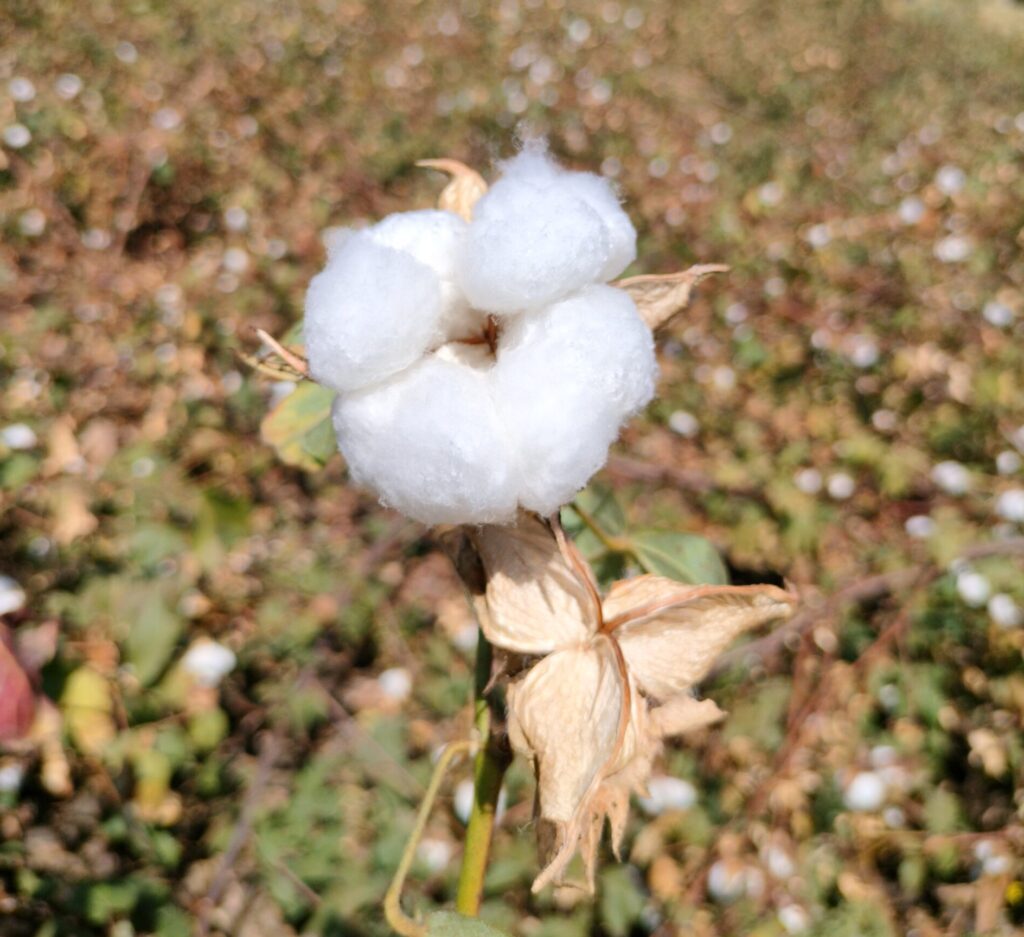
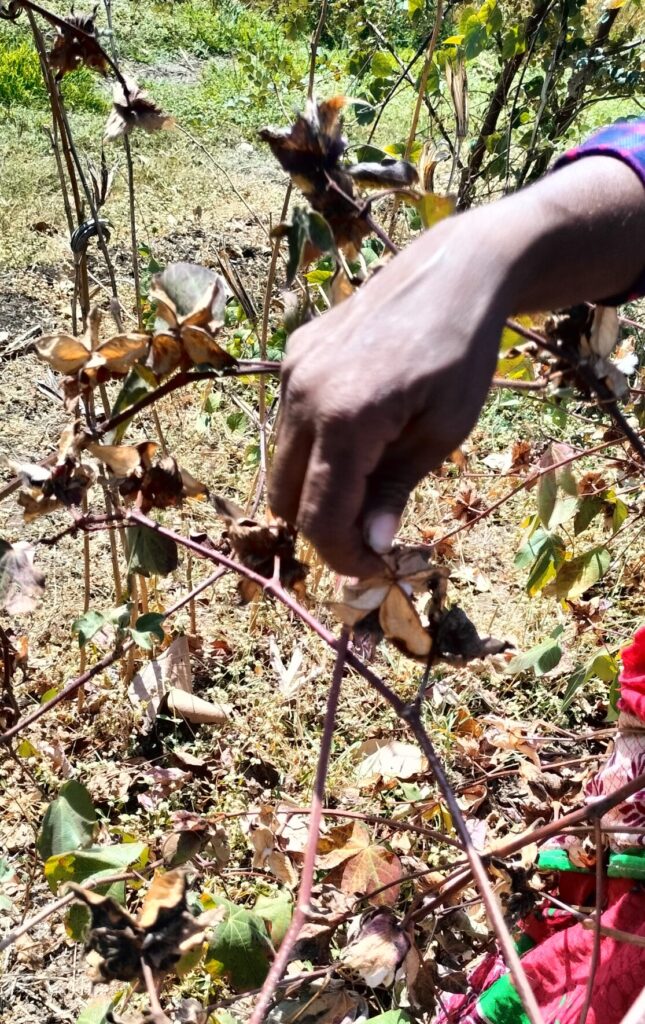
Plucking cotton
Farmers pluck out cotton balls with bare hands. One has to twist them from the stem and collect in a bag, locally known as ‘khoyi‘ (a traditionally wrapped long piece of cloth).
It’s mostly women and adolescent girls of the family who engage in harvesting the cotton. They start at 8 in the morning and work until 5 in the evening with a 1 hour break in between, to have lunch. After removing cotton balls from the plant, the dry sepals of the plant deform to become sharp thorns that leave scratch marks on the hands of harvesters. Thus, they wear a long-sleeve shirt while doing this work.
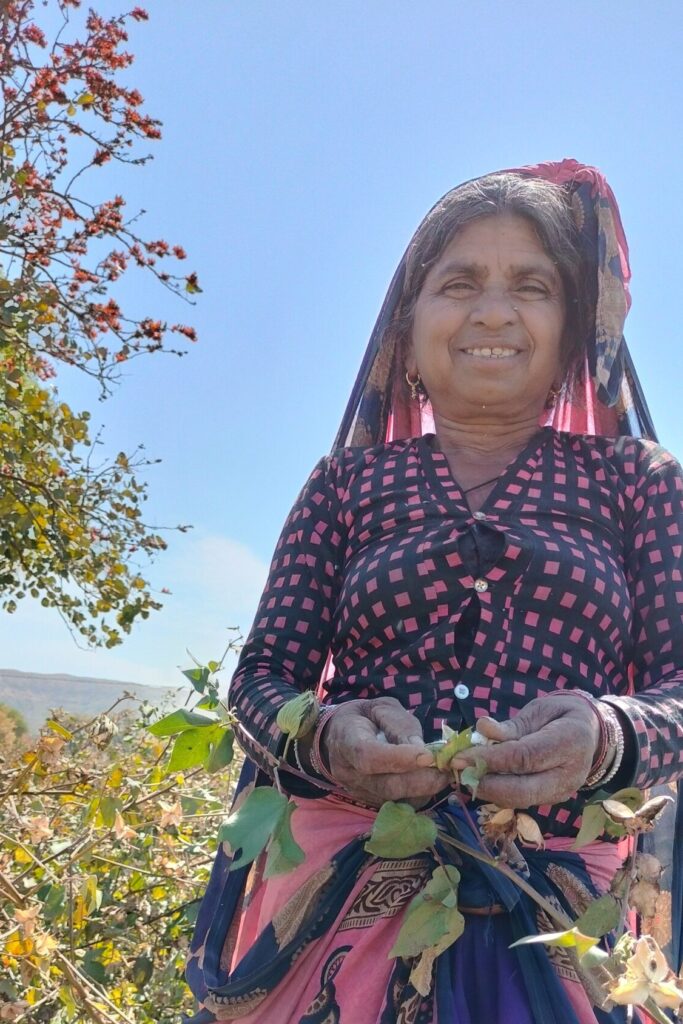
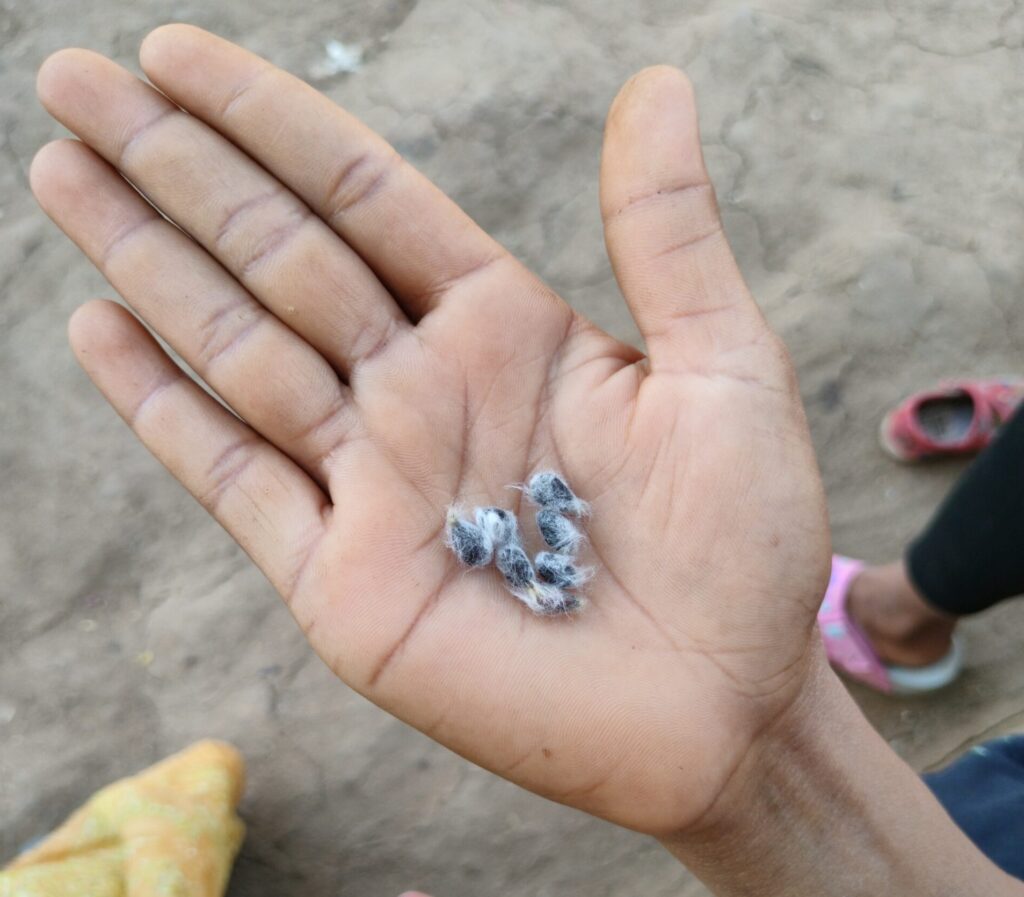
Selling and using domestically
I saw people collecting the harvested cotton in large vessels. They take it to the market by hiring rickshaws. Most of the times, the whole family is involved in selling cotton in the market. The market rate is ₹60 per kg here.
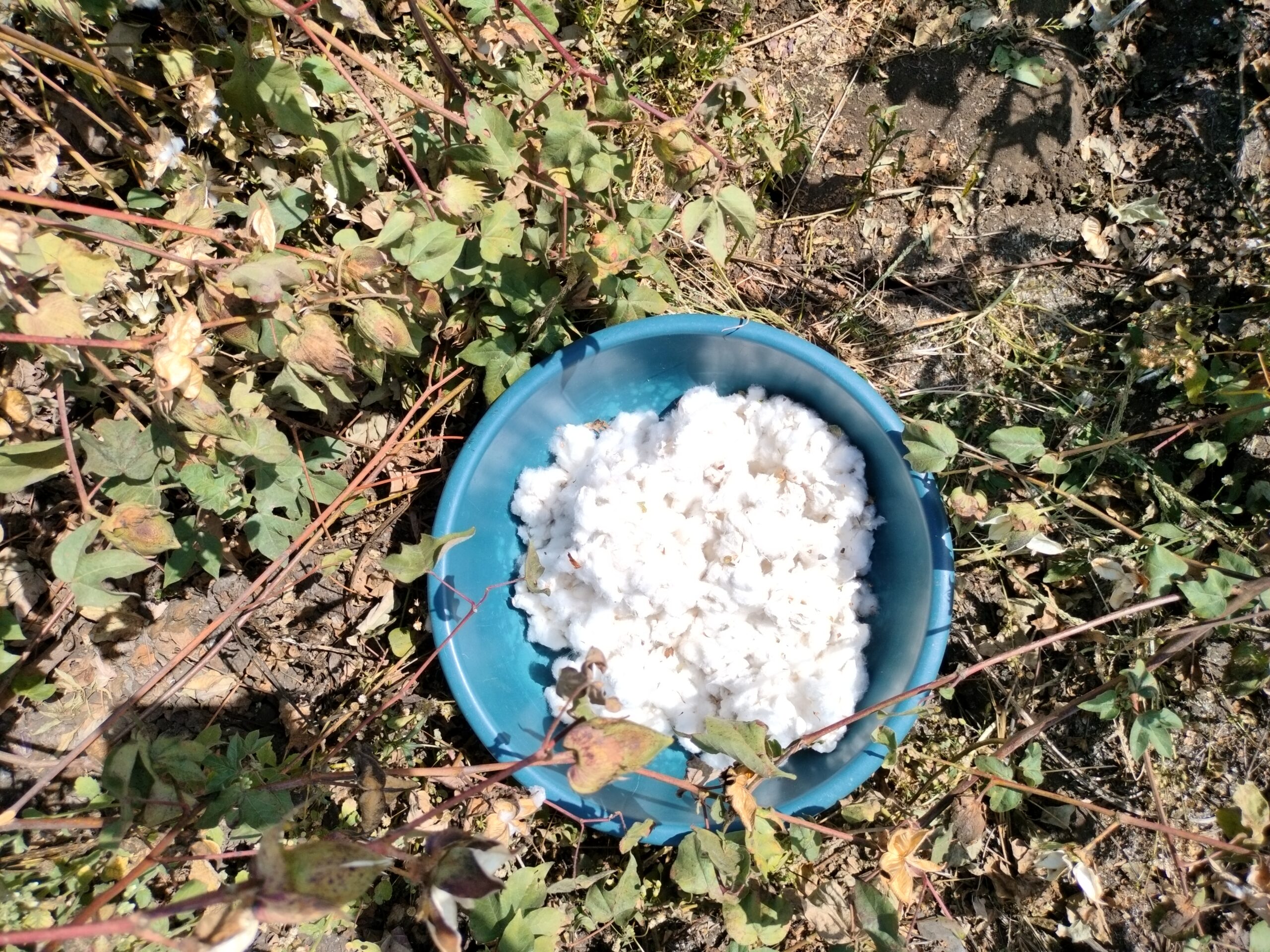


Apart from selling cotton in the market, people also use the harvested plant for their own use, in different ways. Some common uses are that of firewood, to make boundary walls, building the roof of cattle sheds, even as a construction material for houses.


*Name changed to maintain confidentiality


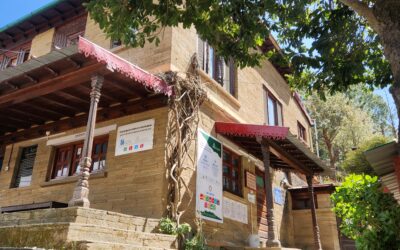

0 Comments